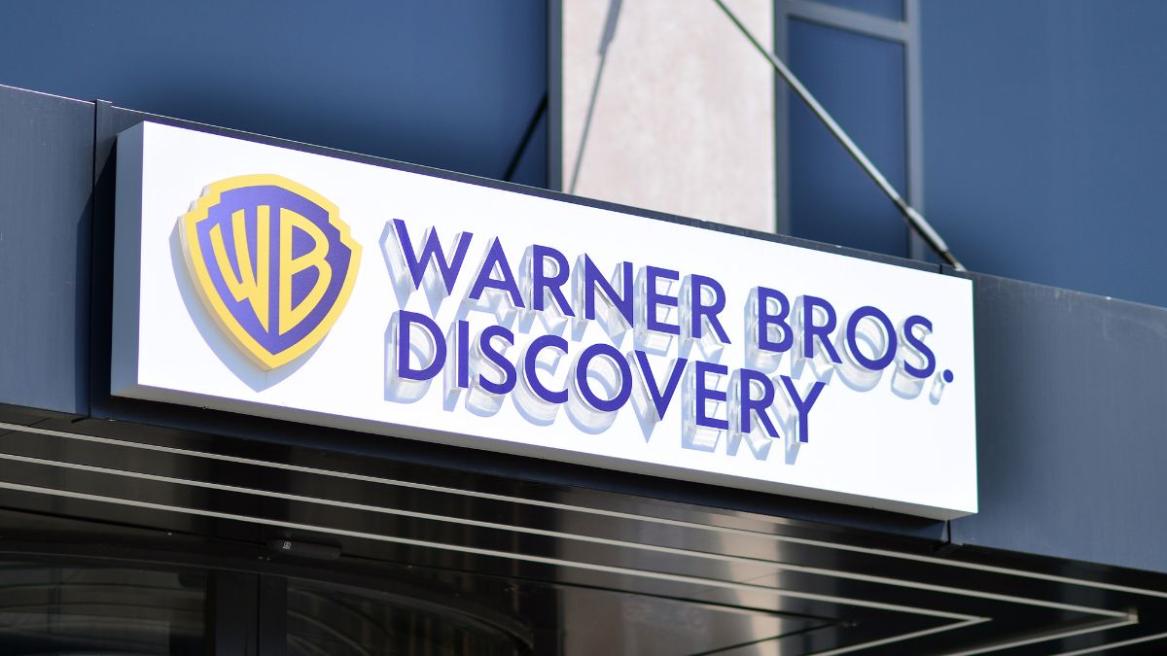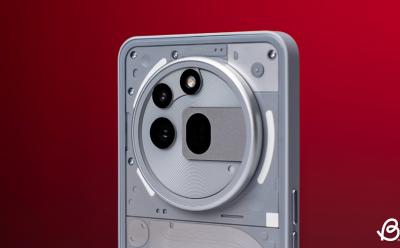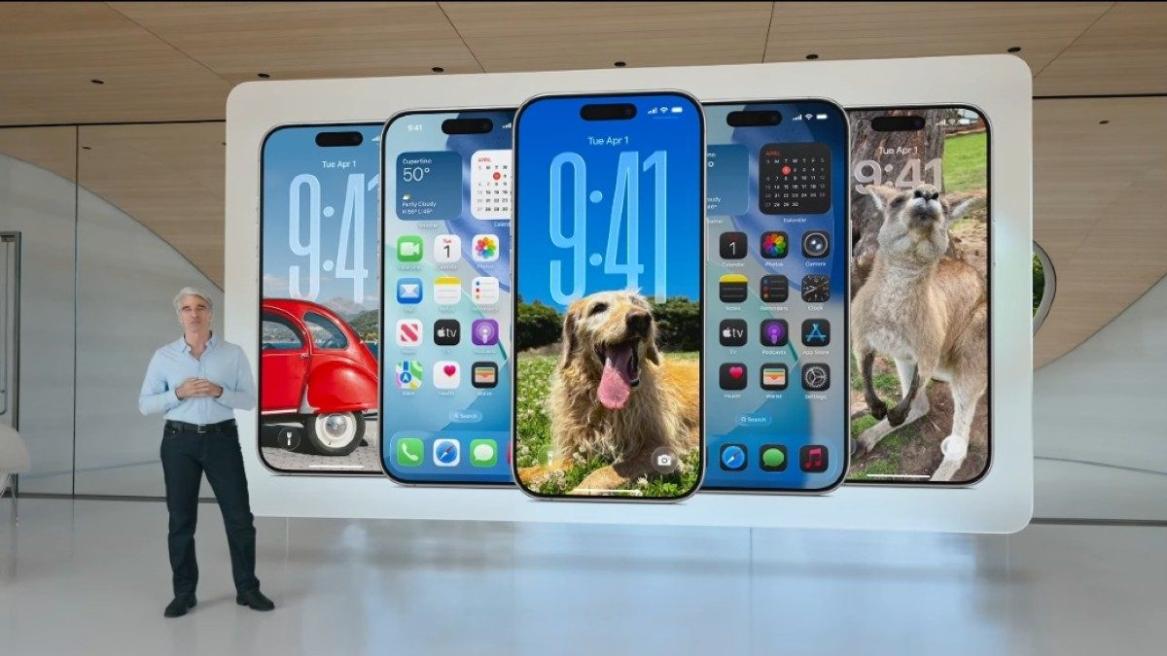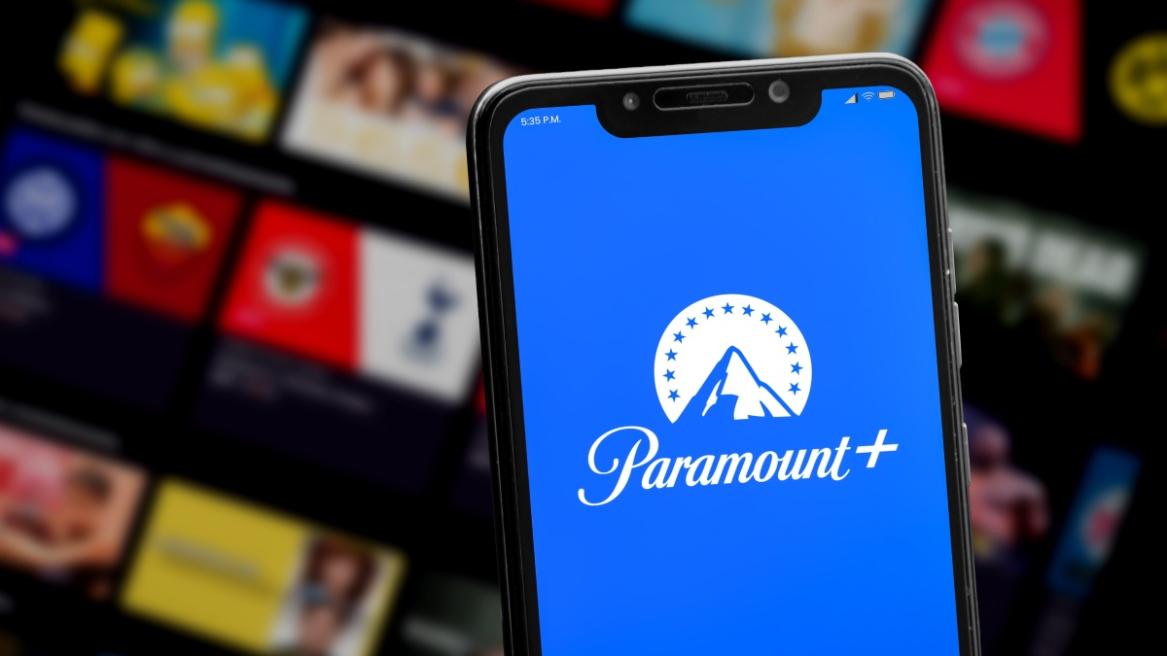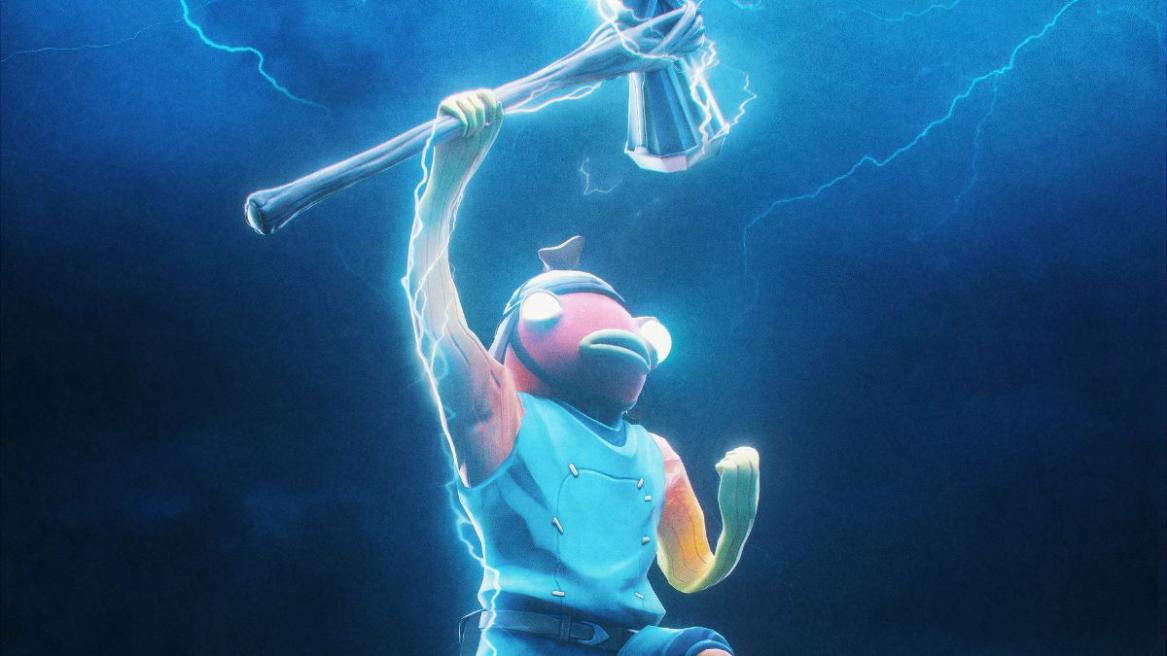A growing controversy surrounds the use of powerful AI image and video generators that can recreate iconic characters and scenes by interpreting text prompts. The dispute centers on whether these systems are properly crediting and licensing the original rights holders when their copyrighted characters appear in AI-generated outputs. In this case, Warner Bros. Discovery has taken a hard line against Midjourney, a prominent AI company whose platform enables users to generate visuals by supplying descriptive prompts. The legal action highlights broader tensions between rapid AI innovation and the protection of established intellectual property, raising questions about how UIs, licensing, and attribution should function in the age of machine learning-driven content creation.
What Midjourney Does and the IP Challenge
Midjourney operates as an artificial intelligence service that allows subscribers to transform textual prompts into images and videos. Users can request highly specific visuals—for example, “Batman in the classic Dark Knight armor”—and the platform responds with generated outputs designed to match that description. The service has been offered on a tiered subscription model, with prices ranging from ten dollars to as much as one hundred twenty dollars per month. This model makes sophisticated AI-generated media accessible to a broad audience, including hobbyists, designers, filmmakers, and marketing teams who want rapid, on-demand visuals.
The core premise of Midjourney’s technology is to leverage large-scale training data drawn from the internet to teach its models how to produce new images and videos that resemble a wide array of styles, characters, and motifs. In practice, this means the AI learns from a broad corpus of publicly accessible content, much of which is protected by copyright. While the platform does not require users to obtain rights or licenses upfront for every generated item, it implicitly relies on those underlying works to reproduce familiar visuals and characters. From a user’s perspective, this capability can streamline creative workflows, reduce production costs, and enable experimentation with visual concepts that previously demanded substantial time and resources.
The tension arises when the items created by AI resemble protected intellectual property. In such instances, questions emerge: Does the AI “know” the rights holder’s ownership, and if so, who bears responsibility when a generated image or video infringes on someone’s IP? The practical concern is that Midjourney, by enabling the generation of content tied to widely recognized properties, could effectively replicate trademarked characters, storylines, or visual signatures without securing consent or providing attribution. Warner Bros. Discovery argues that this phenomenon represents more than incidental likeness; they contend that the platform amplifies and reproduces protected IP in ways that deprive rights holders of deserved credit and control.
Beyond the question of infringement, analysts and industry observers note the broader ethical implications. When AI systems train on large swaths of internet content, they can internalize styles, personas, and character traits that belong to real creators and companies. If those outputs are disseminated without attribution or licensing, it can undermine the value of original creations and the rights holders’ ability to manage how their properties are depicted and used in derivative works. The core issue, in short, is whether AI-generated content that echoes famous characters constitutes fair use, derivative works, or an outright infringement, and what responsibilities an AI provider bears for outputs its models generate.
In practical terms, the debate centers on several concrete questions: Are rights holders entitled to compensation whenever a generated image or scene replicates a protected character? Should AI platforms implement explicit licensing frameworks or attribution methods to acknowledge ownership? Are there design or governance changes to how prompts are processed so that recognizable characters are treated as licensed assets, with appropriate permissions and revenue sharing? And importantly, what standards govern the training data used to teach these systems in the first place, given that the material can include copyrighted works created by others?
To understand the stakes, consider the types of characters involved in these discussions. Iconic figures such as Batman, Superman, and Wonder Woman—longstanding properties in the Warner Bros. Discovery catalog—are not merely images; they are complex, narrative-driven IP assets with historical significance, licensing agreements, and explicit consumer expectations about how they should appear and be represented. When an AI platform can reproduce those likenesses or storybeats in ways that mirror the original IP, it touches on core business models across film, television, comics, merchandising, and licensing. The result is a multi-faceted disruption that affects creative direction, revenue streams, and the governance of digital content in the entertainment ecosystem.
The defense of IP rights in this setting hinges on several pillars. First, rights holders argue that the ability to generate outputs resembling copyrighted characters without licensing undermines the control they maintain over how those characters are used and distributed. Second, they claim that the brand value and audience expectations tied to established properties are not merely about recognizing a character’s appearance but about the broader context, narrative associations, and licensed experiences built up over decades. Third, they emphasize the potential erosion of creative incentives if derivative or quasi-presidential recreations can be produced cheaply or without permission. In contrast, proponents of AI-generated media often emphasize the transformative potential of these tools to assist artists, accelerate concept exploration, and democratize access to high-quality visuals. They argue that the technology can be used to push boundaries, develop new storytelling formats, and democratize visual experimentation, provided appropriate guidelines, licensing, or attribution are in place.
This foundational tension—between enabling rapid, low-cost creation and safeguarding established IP rights—frames the central controversy. It also frames the broader policy questions, including whether the training data used to teach AI systems should be licensed content, what forms of attribution or revenue sharing might be appropriate, and how courts should interpret copyright law when it intersects with the capabilities of advanced machine learning models. As the sector evolves, these questions will shape not only litigation outcomes but also the design choices of AI providers, the business strategies of rights holders, and the overall trajectory of AI-assisted content creation in entertainment, advertising, gaming, and beyond.
The IP Controversy: Warner Bros. Discovery’s Lawsuit
Warner Bros. Discovery has taken formal legal action against Midjourney, arguing that the AI platform infringes and improperly reproduces copyrighted characters owned by Warner Bros. Discovery. The core allegations emphasize that Midjourney “brazenly dispenses Warner Bros. Discovery’s intellectual property,” producing images and videos that closely resemble iconic characters and narratives from the studio’s portfolio. The lawsuit reflects a broader pattern in which major studios have begun to push back against AI vendors whose systems create outputs that echo protected works without clear licensing or attribution frameworks.
In the complaint, Warner Bros. Discovery asserts that the heart of their industry—storytelling and character development—relies on deliberate collaboration with creative partners, safeguarding the rights and expectations attached to those IP assets. A company spokesperson for Warner Bros. Discovery underscored the aim of the business to develop and bring to life stories and characters that entertain audiences, aligning with the creative vision nurtured through licensing and partnerships. The legal posture is consistent with a commitment to ensuring that the rights and reputations of IP assets are protected in a landscape where AI tools can reproduce familiar visuals rapidly and at scale.
From Warner Bros. Discovery’s perspective, the stakes are not only about the infringement of individual images or scenes but about the potential cumulative impact on the ecosystem of IP ownership. If AI platforms can generate a steady stream of outputs that resemble popular franchises without transparent licensing, the financial and strategic value of those properties could be undermined. That, in turn, could affect where and how Warner Bros. Discovery invests in IP development, distribution, and monetization strategies. It could also influence how studios negotiate licensing contracts with third-party platforms and partners, encouraging more explicit terms around the permissible use of copyrighted material in AI-generated outputs.
The legal landscape surrounding this dispute is still developing, and the precise remedies Warner Bros. Discovery seeks may include financial restitution and injunctive relief to restrict certain uses of the platform that violate IP rights. In some public discussions, the potential damages referenced have been substantial, with figures cited indicating a possible demand of significant sums for each instance of alleged infringement. Such numbers underline the seriousness with which the studio views the risk to its IP portfolio and the precedent this case could set for AI-based content creation going forward.
The development of this case—alongside comparable actions from other studios—signals a heightened awareness in the industry about how AI tools interact with rights management. The lawsuit may prompt a reexamination of how AI services source training data, how they disclose the possible outcomes generated by their models, and how they address potential infringements before content is released to end users. It also raises questions about the responsibilities of AI platforms to pre-screen outputs for potential IP conflicts and to implement safeguards that prevent unauthorized reproductions of protected characters. As the case progresses, observers will watch closely for decisions that could influence licensing norms, model training practices, and the governance frameworks that guide AI-driven content creation across entertainment, comics, and related media.
Midjourney has not issued an official public statement regarding the lawsuit at this time. The absence of a comment from the platform leaves many questions about its operational practices, governance, and potential willingness to negotiate licensing arrangements in a post-litigation environment. Stakeholders across the industry are monitoring how Midjourney may respond—whether through changes to its terms of service, adjustments to its training data policies, or the introduction of licensing pathways that align with rights holders’ expectations. The outcome of this dispute could have far-reaching implications for how AI tools are used in commercially oriented contexts, from film production pipelines to marketing campaigns that rely on AI-generated visuals to convey brand narratives.
As the legal process unfolds, it is worth noting that Warner Bros. Discovery is not alone in pursuing action against AI platforms over IP concerns. Reports indicate that other major studios, including Universal and Disney, have pursued legal avenues in similar contexts earlier in the year. The convergence of these cases signals a broader strategic effort by rights holders to establish clearer boundaries around how AI-generated content interacts with protected IP. The broad pattern suggests that the entertainment industry is intensifying its governance of AI-assisted content to ensure that IP rights are respected, licensing terms are clear, and the value of iconic properties remains protected in a rapidly evolving digital landscape.
For observers and practitioners in the AI and IP spaces, the core takeaway from these developments is the critical need for transparent licensing models, robust attribution mechanisms, and well-defined training data policies that can reconcile the power of AI systems with the rights and expectations of IP owners. The debate is not simply about one company or one lawsuit; it reflects a fundamental recalibration of how creative industries will operate as machine learning capabilities become deeply integrated into content creation, distribution, and consumer experiences. The implications extend beyond a single case, shaping best practices, regulatory considerations, and the future economics of AI-driven media production.
The Economic Dimension and Potential Damages
Specifically, media reports indicate that Warner Bros. Discovery has sought substantial damages—up to a proposed amount per infringing item—reflecting the significant financial impact that unauthorized reproductions could have on the value chain of licensed properties. The magnitude of the claimed damages highlights the perceived seriousness of the infringement and the potential precedent for future actions in the AI space. This dimension is not just a question of monetary restitution; it also signals how IP owners intend to protect their franchises as AI-generated content becomes more prevalent in marketing materials, fan creations, and professional productions.
From the perspective of Midjourney and similar platforms, the case underscores the risk of punitive penalties that could reshape the economics of AI-driven content. If courts uphold the claims and grant substantial damages or injunctions, AI providers might face higher compliance costs, stricter content governance, and more stringent licensing requirements that could affect subscription pricing, feature availability, and the geographic reach of their services. The broader market could see a shift toward more conservative approaches to training data usage, with upgrades to data provenance tracking, model attribution, and licensing infrastructures designed to minimize infringement risk while preserving their ability to deliver next-generation creative tools.
The legal process will also impact how artists and rights-holders view fair compensation in the era of AI. It may accelerate industry-wide negotiations around licensing for AI-generated content that resembles copyrighted works, setting expectations for how royalties or licensing fees should be calculated when AI outputs are derived from protected characters. The outcome could influence the development of standardized frameworks for IP compliance, similar to established licensing regimes in other digital content sectors. In any case, the case represents a pivotal moment for both AI technology providers and the holders of cherished IP property, as both sides navigate an environment shaped by rapid technological change and evolving legal norms.
The Ethical and Creative Implications for Artists and Studios
Beyond the legalities, the dispute raises a series of ethical questions about the responsibilities of AI developers and operators. When a platform like Midjourney can generate content that mirrors a widely recognized character, there is a concern about whether the platform is enabling a form of creative borrowing that deprives human artists of recognition and revenue. The ethical argument hinges on whether AI-generated outputs should be treated as distinct creative artifacts or as derivatives of existing IP that should be subject to licensing and attribution. As AI systems improve and become more capable of producing outputs that closely resemble specific characters, the risk of blurring lines between original works and machine-generated variants grows.
For artists and professionals who contribute to IP-rich universes, the prospect of widespread AI-assisted recreation can feel like a disruption to the traditional pipeline of content development. In a world where fans and audiences increasingly engage with AI-generated media, there are legitimate concerns about how to preserve the integrity of the creator-brand relationship. At the same time, AI tools offer potential benefits for creators, including rapid ideation, cost-effective prototyping, and new modes of storytelling that might not have been feasible otherwise. The challenge lies in balancing the opportunities with the rights holders’ need to protect their properties and the public’s expectation that iconic characters are depicted in ways that align with established brand standards and licensing agreements.
From a policy standpoint, the case amplifies the call for clearer guidelines on the ethical use of copyrighted content as training material. If training data policies explicitly address the licensing status of content, the rights of creators, and the responsibility for licensing outputs, AI platforms could avoid unintended infringements while continuing to innovate. This may include implementing opt-out mechanisms for rights holders, establishing data provenance that clearly documents what content was used to train a model, and offering fair compensation models that align with the value generated by AI-assisted content creation. The ethical discourse thus intersects with business strategy, legal compliance, and the evolving expectations of audiences who consume AI-generated media.
In addition to the questions of attribution and licensing, there is the matter of quality control and brand safety. For studios and networks, maintaining control over how their characters appear in public-facing outputs is critical for brand consistency. AI-generated content that deviates from established visual or narrative parameters could undermine public trust in a given franchise. On the other hand, a carefully designed system that respects licensing terms and includes editorial safeguards could enable more dynamic and flexible storytelling while preserving the integrity of IP assets. The balance between creative exploration and brand protection will likely drive new industry standards, technological innovations, and governance structures in the AI-enabled media landscape.
Analysts also highlight the potential impact on employment and professional opportunities for artists who traditionally contribute to IP development. If AI tools can replicate notable character aesthetics or scenes, artists may need to adapt by focusing on areas where human creativity remains essential or by negotiating new forms of collaboration with AI systems under licensing and compensation agreements. The future of work in creative industries is likely to involve a blend of human artistry and machine-assisted concept development, with clearly defined IP boundaries and transparent licensing terms guiding how outputs are produced and monetized.
Subsections: Training Data, Attribution, and Licensing Approaches
-
Training data transparency: A core ethical and practical issue is whether AI platforms should disclose the datasets used to train their models. Clear, auditable information about training sources could help rights holders assess infringement risk and determine whether licensing opportunities exist. It could also support end users in understanding the provenance of outputs and the degree to which a generated image or video draws on protected content.
-
Attribution mechanisms: Some argue for automated attribution that credits IP owners whenever outputs resemble protected characters or narratives. Attribution alone may not suffice for licensing, but it could represent a important step toward acknowledging rights holders and facilitating fair compensation for IP-based outputs produced by AI systems.
-
Licensing frameworks: A robust licensing framework could emerge, enabling AI providers to obtain licenses for the use of protected characters in training data or, alternatively, to agree on revenue-sharing arrangements when outputs reproduce distinctive IP. Such frameworks could involve upfront licensing fees, ongoing royalties, or usage-based payments that align incentives between rights holders and technology platforms.
These considerations will shape the design and governance of AI services as they scale. The interplay between technology, law, and ethics will determine how well AI-driven content can be integrated into commercial pipelines without compromising the rights and interests of IP owners, creators, and fans who value the integrity of iconic franchises.
The Legal Landscape: How Courts View AI-Generated Content
The Warner Bros. Discovery case against Midjourney sits within a broader legal and regulatory conversation about AI, copyright, and the admissibility of machine-generated content in commercial contexts. While the specifics of jurisdiction and precedent will shape the outcome, the central legal themes are consistent across many similar cases: whether training AI models on copyrighted material constitutes permissible transformation, whether outputs qualify as derivative works, and what constitutes fair use in an era of machine learning. Courts will also consider the degree of similarity between AI-generated content and protected characters, the potential for consumer confusion, and the economic impact on rights holders who rely on licensing and merchandising ecosystems.
In this context, several legal concepts are frequently debated. Derivative work versus transformative use—where the latter might be argued as a new work that substantially transforms the original source—represents a focal point. If an AI-generated image is considered transformative and does not merely copy existing elements, courts may be more inclined to allow it under certain conditions. Conversely, if the output is deemed a direct reproduction or a close imitation that competes with licensed products, infringement claims become more straightforward. The fair use doctrine also comes into play, particularly when the use is for commentary, critique, or non-commercial purposes, or when the transformative effect and market impact are weighed. The evolving nature of AI complicates traditional tests for fair use, requiring careful analysis of how much the AI training data contributes to the final output and how much the output echoes specific protected works.
Another critical legal question is process transparency and accountability. Rights holders may demand that AI platforms implement safeguards to prevent the production of outputs that closely resemble protected properties without authorization. This could include pre-release screening systems, redaction of certain elements, or guiding prompts that steer generation away from recognizable IP. Courts may also evaluate the adequacy of protections that the platform has in place to prevent misappropriation, as well as whether the platform has taken reasonable steps to obtain licenses or authorization where feasible.
It is important to recognize that the legal landscape surrounding AI-generated content is still taking shape. Different jurisdictions may apply copyright law in distinct ways, and early rulings can influence subsequent cases in other regions. The lack of harmonized standards across countries creates a dynamic and sometimes uncertain environment for both AI developers and rights holders. As this case moves forward, the industry will be watching not only for a ruling on the specific disputes at hand but also for broader signals about the acceptable boundaries for AI-enabled reproduction of copyrighted material.
The Road Ahead: Potential Outcomes and Industry Implications
-
Settlement paths: A negotiated settlement could involve licensing arrangements, compensation for specific outputs, or the establishment of a framework that governs the use of IP in AI-generated content, along with commitments to invest in data provenance and attribution.
-
Policy changes: The case may prompt changes to the terms of service for AI platforms, including explicit prohibitions or allowances regarding the generation of recognizable IP, as well as enhanced transparency around training data sources and licensing terms.
-
Market adjustments: If courts establish strict liability for IP infringements in AI-generated outputs, AI providers may accelerate the adoption of more rigorous content filtering, licensing, and monitoring mechanisms. This could affect the pace of product development, pricing, and market entry.
-
Industry collaboration: Rights holders and technology providers might form industry coalitions to establish best practices, ethical guidelines, and standardized licensing models that support innovation while protecting IP rights.
Market Dynamics: Midjourney, Rights Holders, and the AI Tools Landscape
Midjourney sits within a rapidly evolving ecosystem of AI content creation tools that aim to democratize creative expression while challenging traditional production workflows. The platform’s pricing structure—ranging from ten to one hundred twenty dollars per month—positions it as an accessible yet premium service for users seeking high-quality AI-generated visuals. The economics of this model rely on scale: a large user base that generates enough outputs to justify ongoing investments in model training, data curation, and compute resources. However, the legal exposure associated with IP infringement can introduce meaningful risk to the business, potentially affecting margins, growth trajectories, and long-term viability if litigation leads to significant settlements or licensing obligations.
The broader AI tools market includes other providers pursuing similar capabilities, each balancing the demands of user creativity with the imperative to comply with IP laws. Studios and IP owners, including Warner Bros. Discovery, Universal, and Disney, are increasingly active in shaping how AI platforms must operate to respect rights. Their actions reflect a strategic emphasis on protecting IP value, brand integrity, and revenue streams that depend on licensing, merchandising, and high-quality productions. In response, AI vendors may pursue a range of strategies—tightening content controls, offering opt-in licensing programs, creating partnerships with rights holders, or developing more transparent data provenance mechanisms—to demonstrate responsible usage and mitigate risk.
From the perspective of content creators, Midjourney and similar tools hold the promise of accelerating ideation, enabling rapid prototyping, and expanding creative exploration across industries—from film and television to gaming and marketing. Yet the ongoing debate over IP rights introduces a level of ambiguity that can complicate budgeting, project planning, and risk management. Colleges, independent studios, and marketing teams may adopt cautious adoption strategies, favoring platforms with clear licensing terms and verifiable compliance measures. In the long run, the sector might move toward standardized licensing infrastructures, similar to software licenses or stock media agreements, that provide predictable terms and compensation for IP-derived outputs.
The competitive landscape among AI art and video platforms will likely intensify as rights holders push back and as technology companies respond with improved safeguards. Differentiators for platforms could include the transparency of training data, the ease of obtaining licenses for protected content, and the availability of editorial controls that ensure brand-safe outputs. The industry may also see an expansion of affiliate and licensing networks that connect AI-generated content producers with rights holders to streamline permissions and revenue-sharing arrangements. As these dynamics unfold, stakeholders will watch for how licensing policies impact the speed and scope of AI-driven production, as well as how consumers perceive the legitimacy and value of AI-assisted works.
Legal Frameworks and Global Perspectives
The intersection of AI and IP law is inherently global, with divergent legal traditions shaping how courts interpret the rights and responsibilities tied to machine-generated content. While the Warner Bros. Discovery case focuses on U.S. IP law, the implications reverberate across borders as platforms offer services worldwide. In some jurisdictions, copyright frameworks may emphasize the protection of original expressions and the exclusive rights of creators, while others might emphasize broader transformative uses or fair dealing provisions that permit certain uses of protected works without licensing. These differences influence how AI providers design their products for different markets and how rights holders pursue enforcement in different legal venues.
In addition to copyright concerns, there are IP considerations related to trademarks, trade dress, and character merchandising. Recognizable silhouettes, costumes, iconic color palettes, and catchphrases associated with characters like Batman or Wonder Woman are integral to brand identity and consumer recognition. The AI-generated re-creation of these elements may implicate not just copyright but also trademark and branding protections, complicating the regulatory landscape further. As such, the industry and policymakers may explore comprehensive frameworks that address a range of IP concerns in the context of AI-powered content generation, including licensing regimes, attribution standards, and transparent data governance.
Industry participants have increasingly called for multi-stakeholder collaboration to establish best practices that balance innovation with IP protection. Such collaboration could involve rights holders, AI developers, policymakers, legal scholars, and representatives from user communities. The aim would be to craft scalable, enforceable guidelines that clarify when AI-generated content infringes, how licensing can be obtained, and what level of attribution is appropriate. By fostering dialogue and sharing technical solutions—such as model training disclosures, data provenance, and content screening—they seek to reduce disputes and accelerate responsible AI adoption in creative industries.
Pathways Forward: What This Means for the AI-Driven Creative Economy
The ongoing dispute between Warner Bros. Discovery and Midjourney is not merely about a single lawsuit; it serves as a catalyst for a broader reckoning about how the creative industries will harness AI while preserving IP integrity. The eventual outcome could influence how AI platforms handle training data, how rights holders approach licensing in a digitized media ecosystem, and how audiences experience AI-assisted content that references or reimagines beloved characters.
Some potential paths forward include:
-
Licensing-first models: AI platforms may embrace licensing partnerships with IP holders to license the use of protected characters and narratives in training data or outputs, creating a cooperative framework that nurtures innovation while ensuring fair compensation and consent.
-
Proactive safeguards: Platforms could implement preemptive content controls, reducing the risk of generating outputs that closely resemble protected properties without permission. This could involve technical filters, limited prompts, or automated checks that flag potential IP conflicts before content is released publicly.
-
Data provenance and attribution: Transparent disclosure of training sources and model development could become a standard expectation, helping rights holders assess risk and enabling more precise attribution for outputs that align closely with protected works.
-
New business models: The industry may see the emergence of alternative monetization structures, such as tiered licensing for IP-related outputs, revenue sharing for successful AI-generated derivatives, or premium access to brand-safe and IP-cleared content for commercial use.
-
Regulation and policy evolution: Policymakers could introduce statutory guidance or regulatory frameworks that address AI training data, IP rights, and accountability for AI-generated outputs, providing clearer pathways for compliance and enforcement.
-
Industry standards: Trade associations and cross-industry coalitions could publish best practices for IP protection in AI-enabled content creation, establishing benchmarks that businesses can adopt to reduce risk and foster responsible innovation.
These pathways would not only influence the commercial viability of AI tools but also shape the creative opportunities available to artists, studios, marketers, and independent developers. The balance between enabling imaginative experimentation and safeguarding the value of protected IP remains delicate and evolving, requiring ongoing collaboration among stakeholders, thoughtful policy design, and practical engineering solutions.
The Creative and Economic Imperatives for Responsible AI
As AI-generated content becomes more prevalent, the creative community seeks tools that amplify human ingenuity without compromising the rights and livelihoods of creators. The Warner Bros. Discovery case against Midjourney embodies this tension and underscores the need for responsible AI development that respects IP ownership, brand integrity, and consumer trust. For AI providers, the challenge is to deliver powerful, user-friendly capabilities while maintaining transparent practices around training data, licensing options, and output governance. For rights holders, the priority is to safeguard IP value, ensure fair compensation for derivative or inspired works, and maintain the integrity of their franchises in a rapidly changing media environment.
In this context, the industry’s path forward will likely involve a combination of licensing clarity, technical safeguards, and governance reforms. If these measures are adopted thoughtfully, AI-powered content creation can coexist with the rights-based creative economy, enabling new forms of storytelling and visual experimentation while preserving the legal and ethical foundations that support enduring brands and fan communities. The outcome of the current dispute will likely influence the trajectory of AI-assisted content creation for years to come, shaping the models, policies, and collaborations that determine what is permissible, profitable, and responsible in the evolving landscape of machine-generated media.
Conclusion
The lawsuit filed by Warner Bros. Discovery against Midjourney spotlights a pivotal moment in the relationship between AI-assisted content creation and established intellectual property rights. The case underscores critical questions about training data, attribution, licensing, and the responsibility of AI platforms to prevent the unauthorized reproduction of protected characters. With major studios signaling a willingness to pursue legal avenues to defend IP, the industry is moving toward a more structured and transparent approach to AI-enabled content production. The proceedings will influence how rights holders manage licensing agreements, how AI providers govern their models and outputs, and how creators collaborate with technology to drive innovation. In the months and years ahead, stakeholders across entertainment, technology, and policy spaces will watch closely to see whether a viable, scalable framework emerges—one that protects IP while empowering creators to explore the full potential of AI-driven media.

